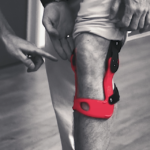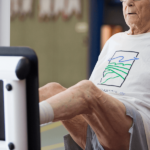Physical therapy often as good as surgery for one type of knee injury
For many people with a tear in the rubbery cartilage that cushions the knee, physical therapy may work just as well as surgery — in terms of quieting pain and returning the joint’s function, a new study suggests.

Immobilize your knee. Splint and bandages may be placed on the involved area to stabilize it and prevent unnecessary movements that can further damage the tissues and muscles. Talk to your doctor about what methods of immobilization are best for your case. wikiHow
By Linda Carroll, Reuters Health, Business Insider October 2, 2018
Dutch researchers following more than 300 patients with a torn meniscus that was not severe enough to lock the knee found that joint function improved both with surgery and with physical therapy, according to the report published in JAMA.
“Our results confirm the findings of previous studies and justify an initial conservative approach with physical therapy in patients older than 45 years with a non-obstructive meniscal tear,” said the study’s lead author, Victor van de Graaf, a resident in orthopedic surgery at the OLVG Hospital in Amsterdam. “If physical therapy doesn’t improve knee function, patients can still opt for surgery (later).”
Each of our knees has two menisci — wedge-shaped pillows of fibrous and rubbery cartilage which sit between the thighbone and the shinbone and act as shock absorbers to cushion the joint and keep it stable. When a meniscus is torn, it can cause pain, swelling and stiffness in the joint. If the tear is big – and the patient unlucky — it can flip into a position that locks the knee into either a bent or straight position.
Van de Graaf and his colleagues randomly assigned 321 patients to receive either surgery or physical therapy. The patients had all been referred by general practioners to one of the participating hospitals for treatment of knee pain, van de Graaf noted.
The patients in the study were all between 45 and 70 years old. Patients were excluded if they had tears that locked the joint, had a body mass index (BMI) in the obese category, had issues with the ligaments supporting the knee, had a prior knee surgery or had severe arthritis.
During the study, 47 of the patients, or 29 percent, who had initially been signed up for physical therapy got surgery instead because of persistent symptoms. Ultimately, though, the patients who stayed with physical therapy reported improvement comparable to what was reported by those who got surgery.
The researchers would like to be able to figure out in advance who is most likely to benefit from physical therapy. “We are currently working on a prediction model,” van de Graaf said. “So, for example, if we would know beforehand that physical therapy has less than a 10 percent chance of being successful in a particular patient, then it would be difficult to defend the conservative approach in that case,” he said by email.

Do the passive knee extension. This is often suggested if patients are not capable of extending the knee completely.wikiHow
The new findings are in line with other recent research on treatments for a torn meniscus, said Dr. Bryson Lesniak, an associate professor of orthopedic sports medicine at the University of Pittsburgh Medical Center. “It’s another article showing that physical therapy for this patient population is a worthwhile and effective intervention,” said Lesniak who was not involved in the new research.
For patients like the ones in the study, Lesniak lays out the pros and cons of both treatment approaches. “Both result in improvement,” he said. “Some patients say, ‘look there’s no way I can have surgery now. I’ve got X, Y and Z going on in my life.’ Others don’t want to take the chance of falling into that 30 percent group who won’t respond to physical therapy.”
That’s similar to the approach Dr. Neil Sheth takes.
“It depends on what kind of person you are,” said Sheth, chief of orthopedic surgery at Pennsylvania Hospital in Philadelphia. “If you’re 46 and a high powered attorney on your feet all day litigating and having to run up and down stairs, you may choose surgery to get back to work sooner,” said Sheth, who was not involved in the new study. “If you’re more sedentary you might be happy to chill out and go to physical therapy.”
Whether it’s due to the recent research showing the benefits of physical therapy or because insurance companies are mandating more people start out with physical therapy, the rates of surgery have been going down, Sheth said. “Back in 2011, 800,000 were being done” annually in the U.S., he said. “Now the number is 535,000.”
Source Reuters Health, Business Insider
| References |
Effect of Early Surgery vs Physical Therapy on Knee Function Among Patients With Nonobstructive Meniscal Tears. The ESCAPE Randomized Clinical Trial, Victor A van de Graaf MD; Julia C A Noorduyn MSc; Nienke W Willigenburg PhD; Ise K Butter MSc; Arthur de Gast MD PhD; Ben W Mol MD PhD; Daniel B F Saris MD PhD; Jos W R Twisk PhD; Rudolf W Poolman MD PhD; for the ESCAPE Research Group. JAMA. 2018;320(13):1328–1337. doi:10.1001/jama.2018.13308
| Further reading |
Physical Therapy or Arthroscopic Surgery for Treatment of Meniscal Tears. Is Noninferiority Enough? Jazrawi L, Gold HT, Zuckerman JD. JAMA. 2018;320(13):1326–1327. doi:10.1001/jama.2018.13181
Risk factors, diagnosis and non-surgical treatment for meniscal tears: evidence and recommendations: a statement paper commissioned by the Danish Society of Sports Physical Therapy (DSSF), Thorlund JB, Juhl CB, Ingelsrud LH, Skou ST. Br J Sports Med. 2018 May;52(9):557-565. doi: 10.1136/bjsports-2017-098429. Epub 2018 Feb 2.
Cost-effectiveness of Early Surgery versus Conservative Treatment with Optional Delayed Meniscectomy for Patients over 45 years with non-obstructive meniscal tears (ESCAPE study): protocol of a randomised controlled trial, Victor A van de Graaf, Vanessa A B Scholtes, Nienke Wolterbeek, Julia C A Noorduyn, Camille Neeter, Maurits W van Tulder, Daniël B F Saris, Arthur de Gast, Rudolf W Poolman on behalf of the Escape Research Group. BMJ Open 2016;6:e014381. doi: 10.1136/bmjopen-2016-014381
Arthroscopic Partial Meniscectomy or Conservative Treatment for Nonobstructive Meniscal Tears: A Systematic Review and Meta-analysis of Randomized Controlled Trials, van de Graaf VA, Wolterbeek N, Mutsaerts EL, Scholtes VA, Saris DB, de Gast A, Poolman RW. Arthroscopy. 2016 Sep;32(9):1855-1865.e4. doi: 10.1016/j.arthro.2016.05.036. Epub 2016 Jul 27. Review.
Exercise or surgery for meniscal tears: Do we have an answer? Mittal R. Natl Med J India. 2016 Nov-Dec;29(6):338-339.
Nonsurgical Management of Knee Pain in Adults, Brandon Q. Jone, MD, Carlton J. Covey MD; and Marvin H. Sineath Jr MD. Nellis Family Medicine Residency, Nellis Air Force Base, Nevada. Am Fam Physician. 2015 Nov 15;92(10):875-883.
Also see
Medial meniscal root tears: Fix it or leave it alone Healio
Physical therapy may be alternative to surgery for patients with non-obstructive meniscal tears Healio
Results support physical therapy or arthroscopic partial meniscectomy in degenerative knees Healio
VIDEO: Physical therapy may be an alternative to surgery for patients with degenerative knees Healio
How to Heal a Meniscus Tear wikiHow






